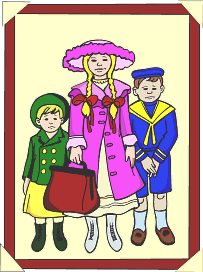|
Since the early 1600s, upwards
of 60 million people have arrived at the shores of North America.
Some have moved on to other countries, or returned home, but more
than 50 million stayed, and most of those who stayed left many descendants,
including (perhaps) you!
 Group One: 1890 to Present Group One: 1890 to Present
This is the largest group and represents those arriving at Ellis
Island in New York, as well as those arriving in Angel Island in
San Francisco, and all the other ports around the U.S. This time
period has the most records for providing information, but sometimes
it can be the hardest time if the ancestor arrived during the years
of privacy. Plus the surname spellings are often changed, and the
wide range of countries from which the ancestors may have emigrated
from can be a challenge.
Group Two: 1860s to 1890s
More than 10 million people came during this time period being
driven by problems in their home countries, better transportation,
and the attraction of land and opportunities in America.
Group Three: 1820s to 1860s
Canada and New England was the recipient of great populations of
people in this era. Passenger lists started to be kept during this
time, and in the past few years they have been indexed and many
posted online at paid genealogy sites. Around 5 or 6 million people
came to North America and many crossed the border from Canada without
need of a passport.
Group Four: Prior to 1820
About 1 million immigrants arrived in North America prior to 1820
including thousands of slaves who are difficult to document. This
group has the largest possibility of someone already writing about
them, or having been researched and found in a database, because
they have left the most descendants in North America. But this is
also a difficult time to find records because:
- No passenger lists were systematically maintained.
- British citizens did not need naturalization prior to the Revolutionary
War.
- Vital Records were no kept.
- Records have been destroyed or lost.
WARNING: Do not just skip ahead to the time period of your ancestor’s
arrival in upcoming lessons. Do not ignore research tips on an ethnic
group that is not your own. The methodology will weave in and out
of each group that we introduce. You might just miss
the method most needed to solve your own research problem. |